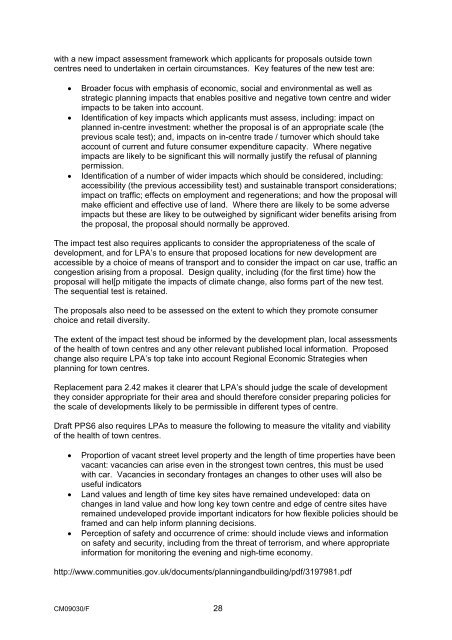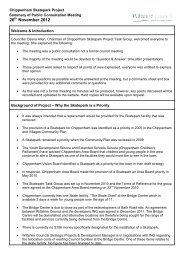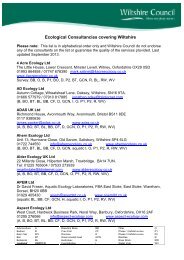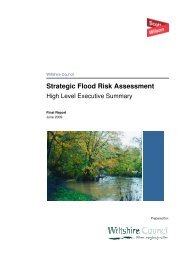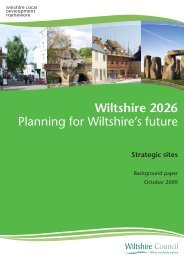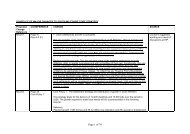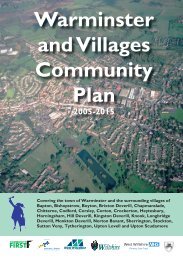Retail - Wiltshire Council
Retail - Wiltshire Council
Retail - Wiltshire Council
- No tags were found...
Create successful ePaper yourself
Turn your PDF publications into a flip-book with our unique Google optimized e-Paper software.
with a new impact assessment framework which applicants for proposals outside towncentres need to undertaken in certain circumstances. Key features of the new test are:• Broader focus with emphasis of economic, social and environmental as well asstrategic planning impacts that enables positive and negative town centre and widerimpacts to be taken into account.• Identification of key impacts which applicants must assess, including: impact onplanned in-centre investment: whether the proposal is of an appropriate scale (theprevious scale test); and, impacts on in-centre trade / turnover which should takeaccount of current and future consumer expenditure capacity. Where negativeimpacts are likely to be significant this will normally justify the refusal of planningpermission.• Identification of a number of wider impacts which should be considered, including:accessibility (the previous accessibility test) and sustainable transport considerations;impact on traffic; effects on employment and regenerations; and how the proposal willmake efficient and effective use of land. Where there are likely to be some adverseimpacts but these are likey to be outweighed by significant wider benefits arising fromthe proposal, the proposal should normally be approved.The impact test also requires applicants to consider the appropriateness of the scale ofdevelopment, and for LPA’s to ensure that proposed locations for new development areaccessible by a choice of means of transport and to consider the impact on car use, traffic ancongestion arising from a proposal. Design quality, including (for the first time) how theproposal will hel[p mitigate the impacts of climate change, also forms part of the new test.The sequential test is retained.The proposals also need to be assessed on the extent to which they promote consumerchoice and retail diversity.The extent of the impact test shoud be informed by the development plan, local assessmentsof the health of town centres and any other relevant published local information. Proposedchange also require LPA’s top take into account Regional Economic Strategies whenplanning for town centres.Replacement para 2.42 makes it clearer that LPA’s should judge the scale of developmentthey consider appropriate for their area and should therefore consider preparing policies forthe scale of developments likely to be permissible in different types of centre.Draft PPS6 also requires LPAs to measure the following to measure the vitality and viabilityof the health of town centres.• Proportion of vacant street level property and the length of time properties have beenvacant: vacancies can arise even in the strongest town centres, this must be usedwith car. Vacancies in secondary frontages an changes to other uses will also beuseful indicators• Land values and length of time key sites have remained undeveloped: data onchanges in land value and how long key town centre and edge of centre sites haveremained undeveloped provide important indicators for how flexible policies should beframed and can help inform planning decisions.• Perception of safety and occurrence of crime: should include views and informationon safety and security, including from the threat of terrorism, and where appropriateinformation for monitoring the evening and nigh-time economy.http://www.communities.gov.uk/documents/planningandbuilding/pdf/3197981.pdfCM09030/F 28


